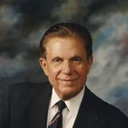Structural Analysis of Tensor Tympani Muscle, Tympanic Diaphragm, Epitympanum, and Protympanum in Menière's Disease: a Human Temporal Bone Study.
Słowa kluczowe
Abstrakcyjny
OBJECTIVE
We hypothesized that there would be significant anatomic differences of the tensor tympani muscle (TTM), tympanic diaphragm, epitympanum, and protympanum in patients with versus without Menière's disease.
BACKGROUND
The effects of tenotomy on Menière's disease suggested it relieves the pressure on the inner ear of the contraction of the TTM and of negative middle ear pressure.
METHODS
Using human temporal bones from patients with Menière's disease, two studies were conducted. We examined the presence of otitis media, cholesteatoma, and endolymphatic hydrops, the length, diameter, configuration, the volume of the TTM and tendon, and the area of the tympanic isthmus (Study 1). We examined the presence of otitis media, cholesteatoma and endolymphatic hydrops, and the area and volume of the protympanum (Study 2).
RESULTS
In study 1, we observed no significant differences between the two groups. In study 2, we did not observe a small and narrow protympanum in the Menière's disease group. None of the ears in the Menière's or control groups had otitis media or cholesteatoma in either study. We observed hydrops in all the temporal bones of the Menière's disease group and none in the control groups.
CONCLUSIONS
The position, configuration, and size of the tensor tympani muscle and tendon do not seem to play a role in the pathogenesis of Menière's disease. Because the tympanic isthmus and protympanum in Menière's disease are not smaller than controls and that none of the temporal bones had otitis media or cholesteatoma, it is unlikely that there was dysventilation in the middle ear.


